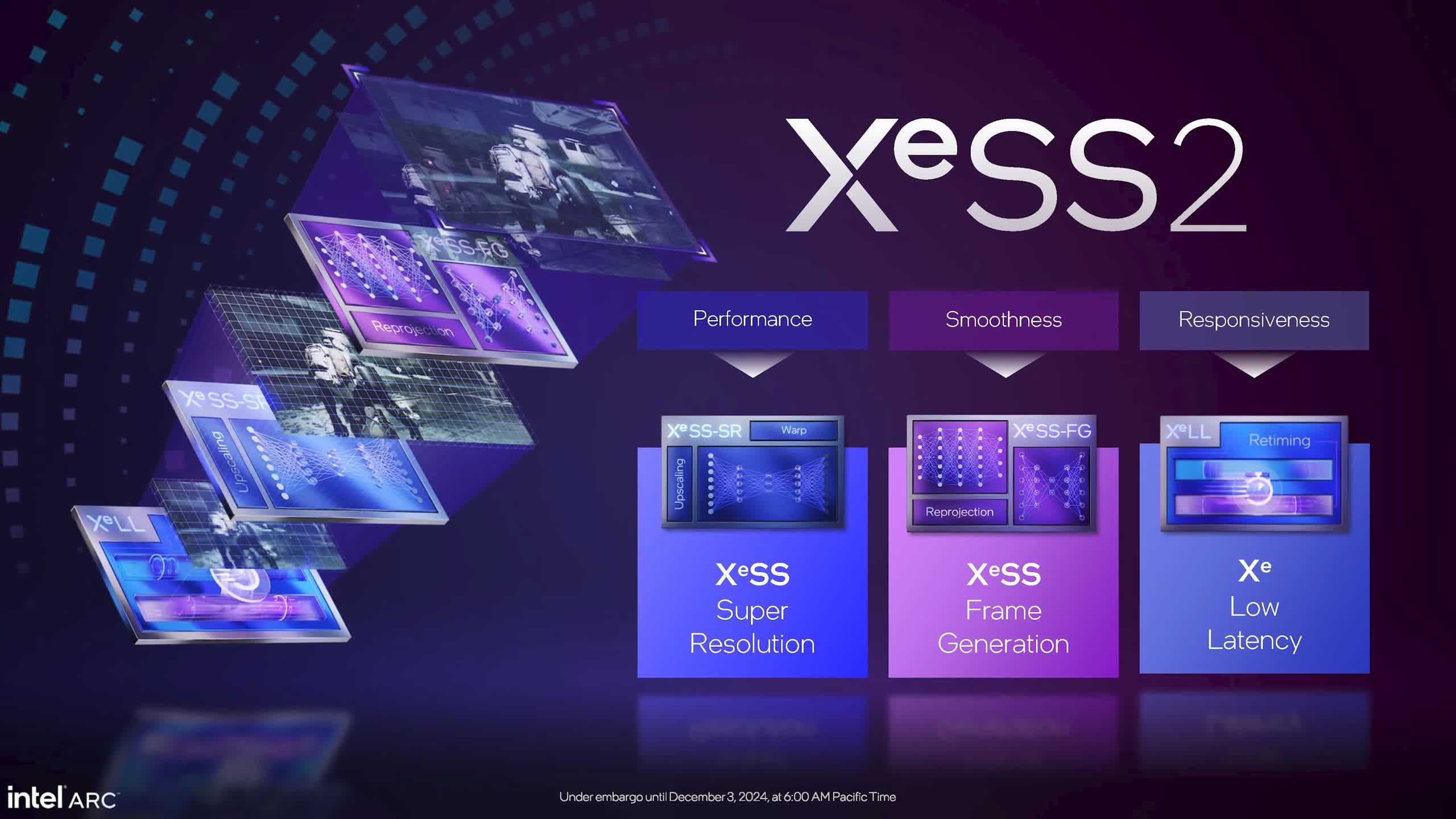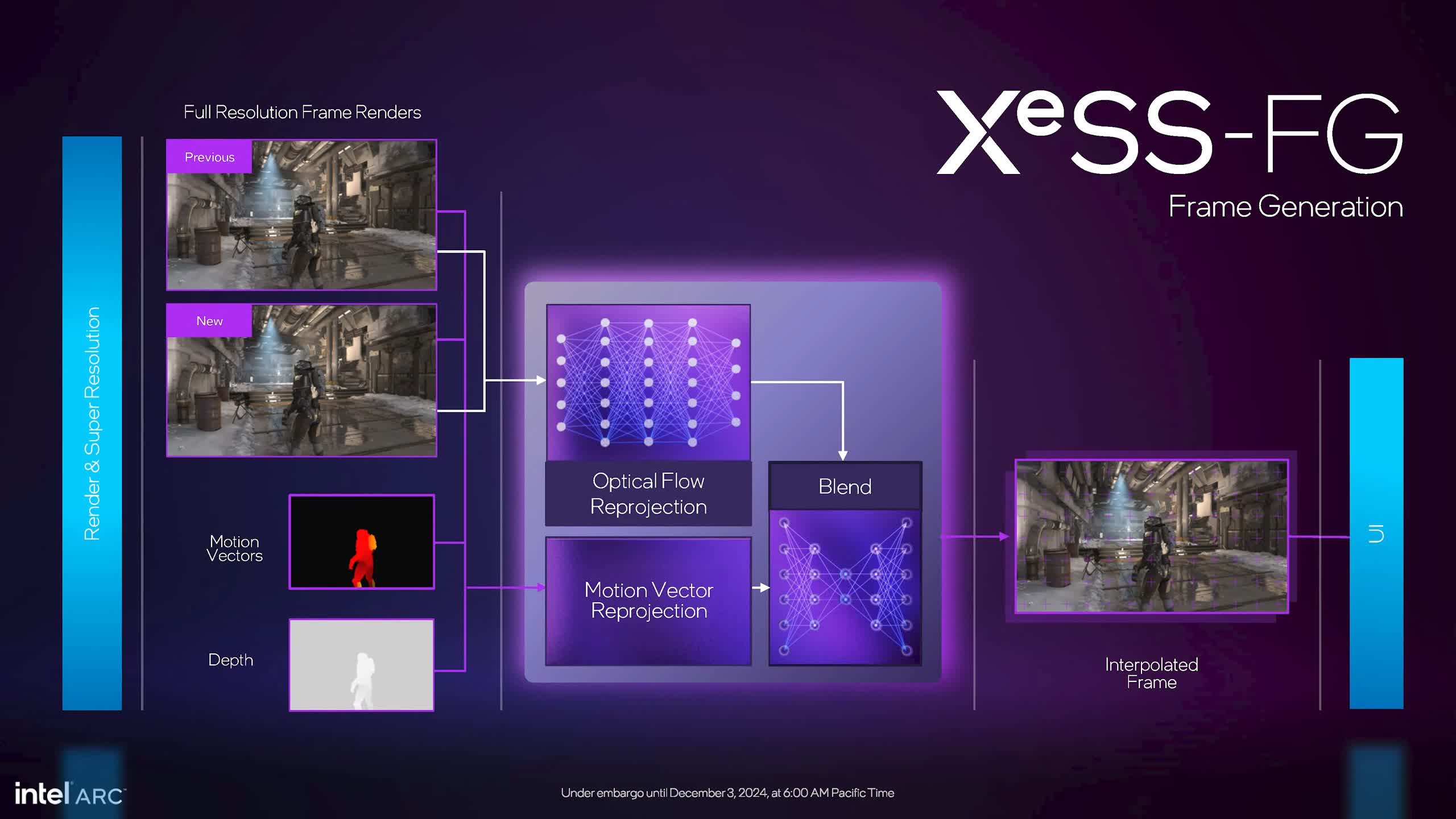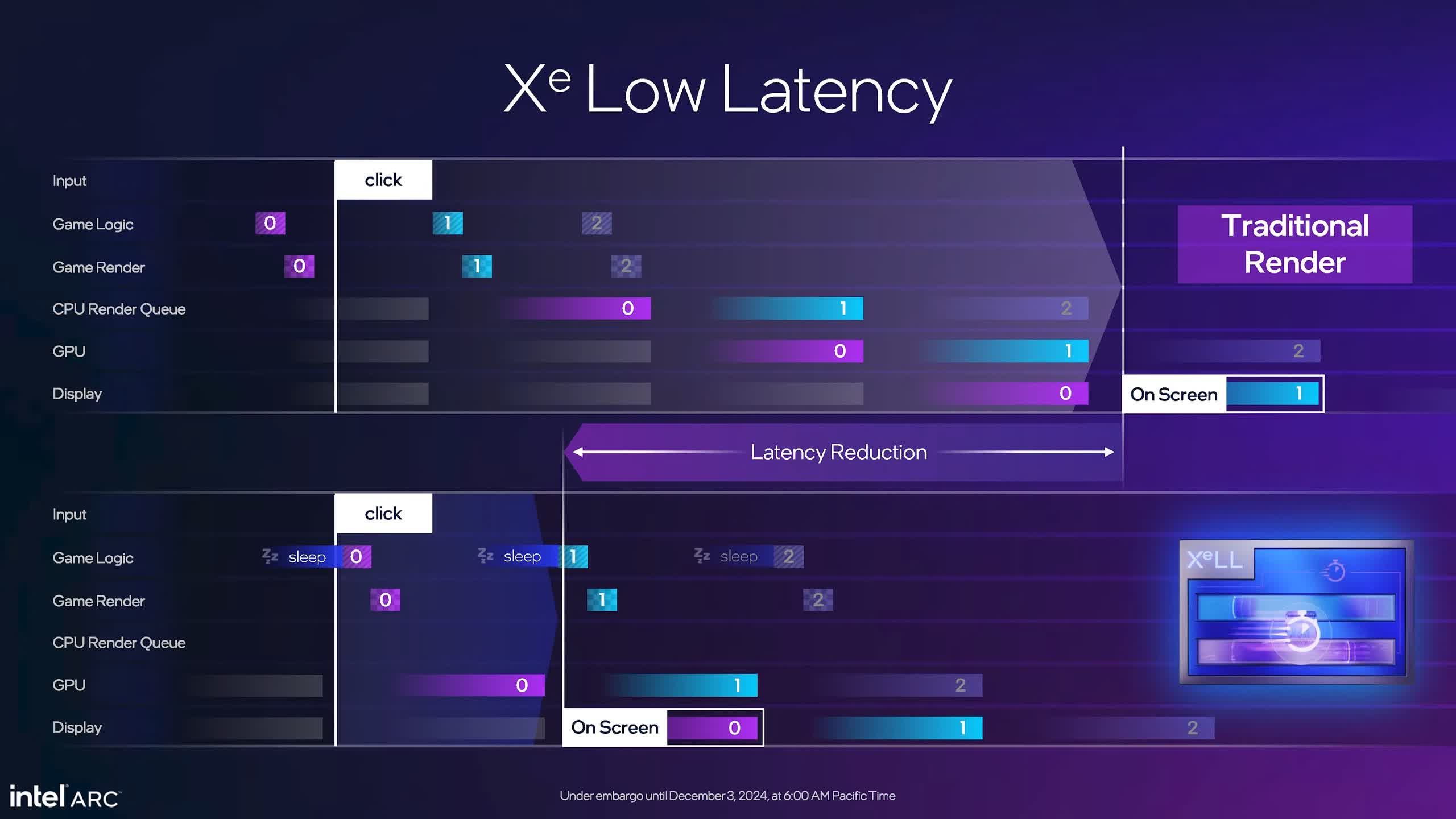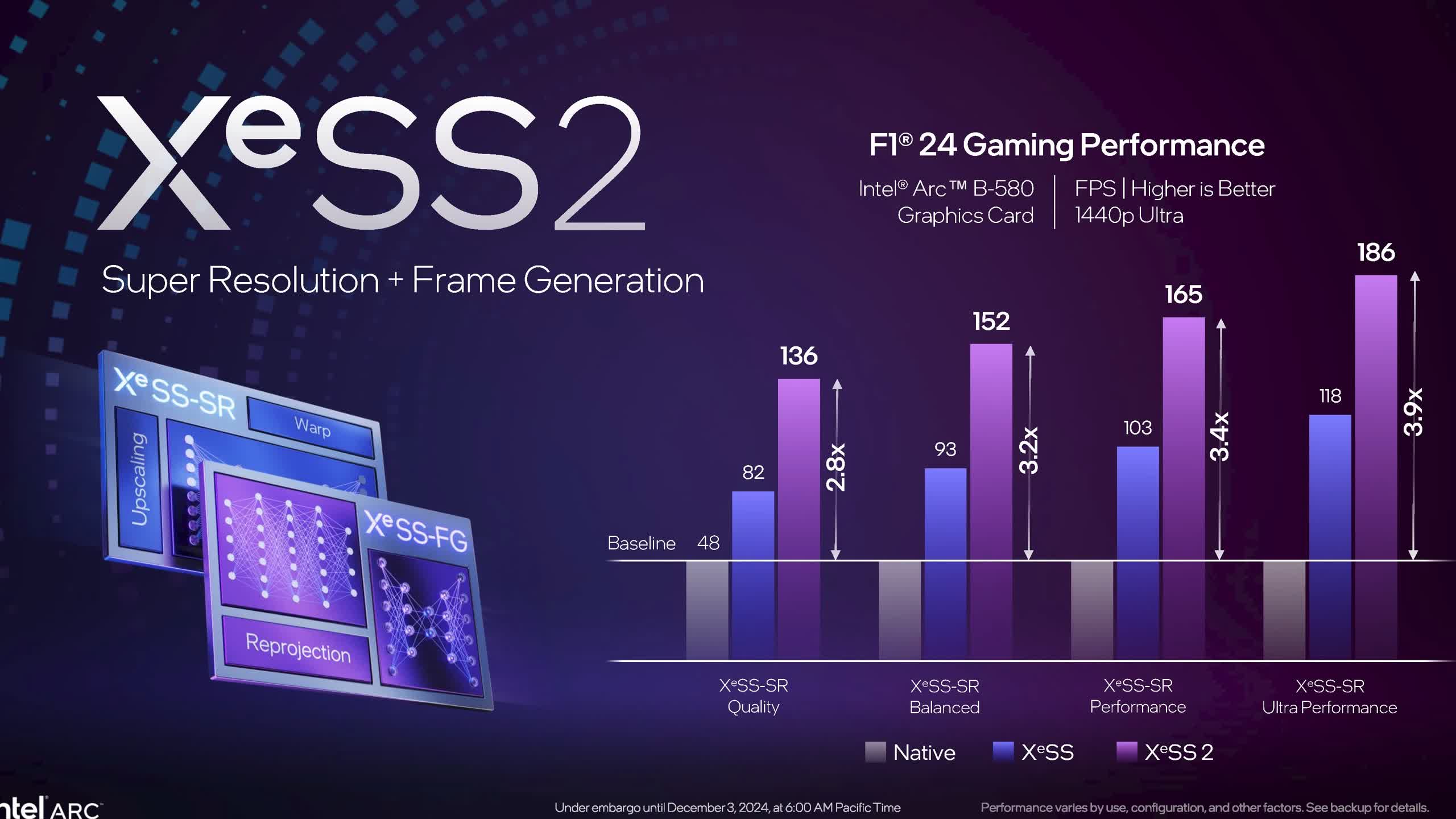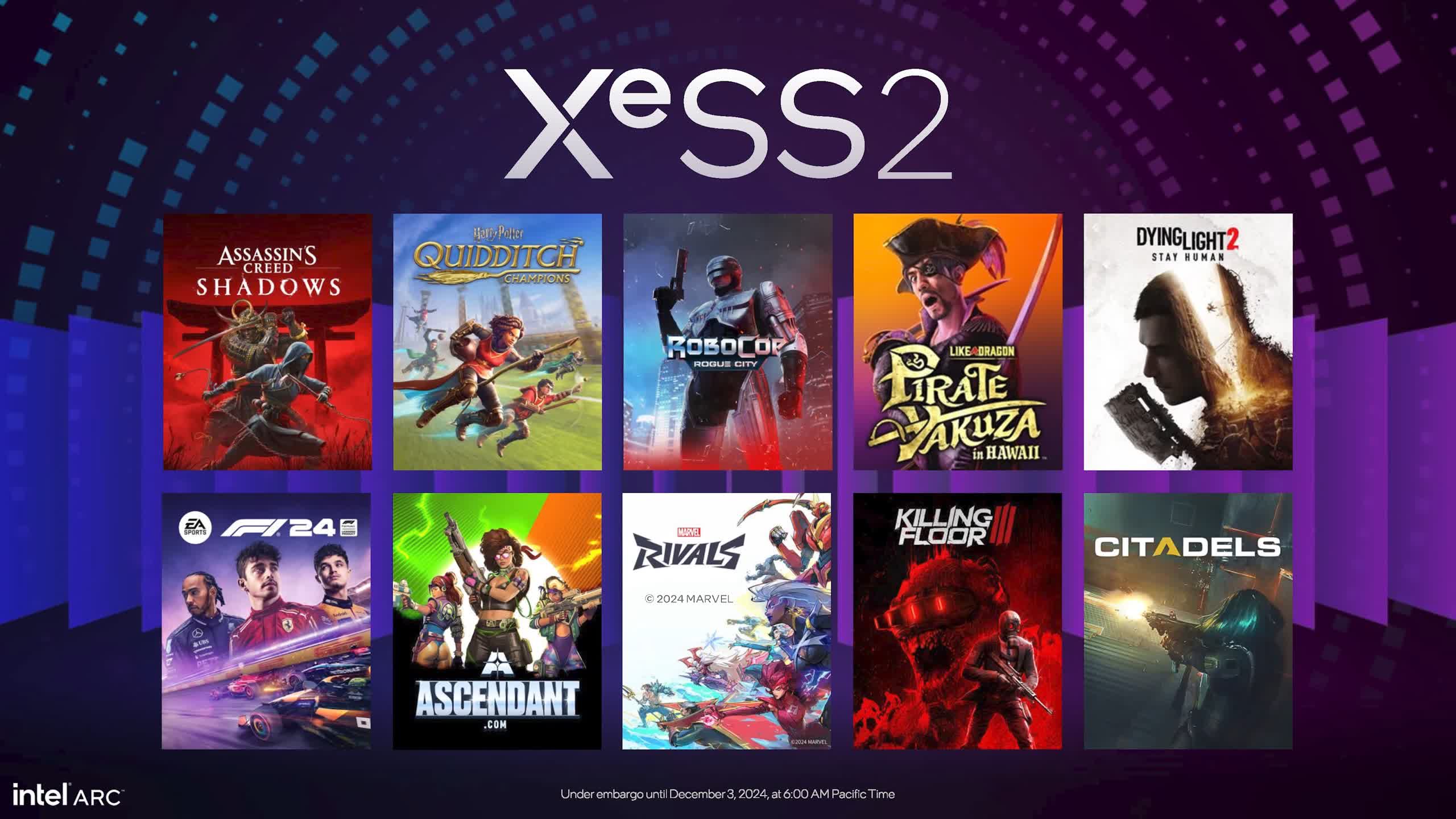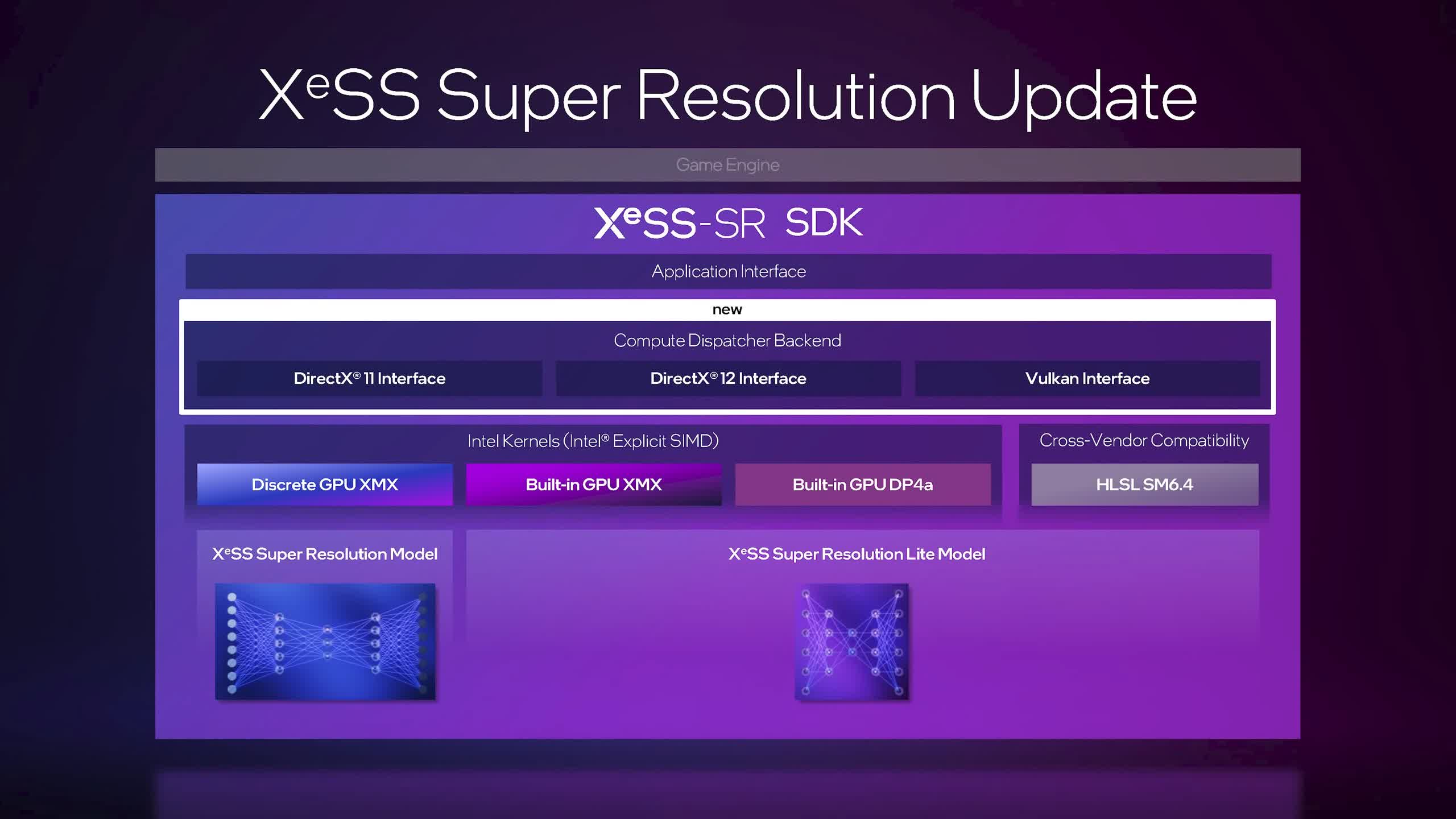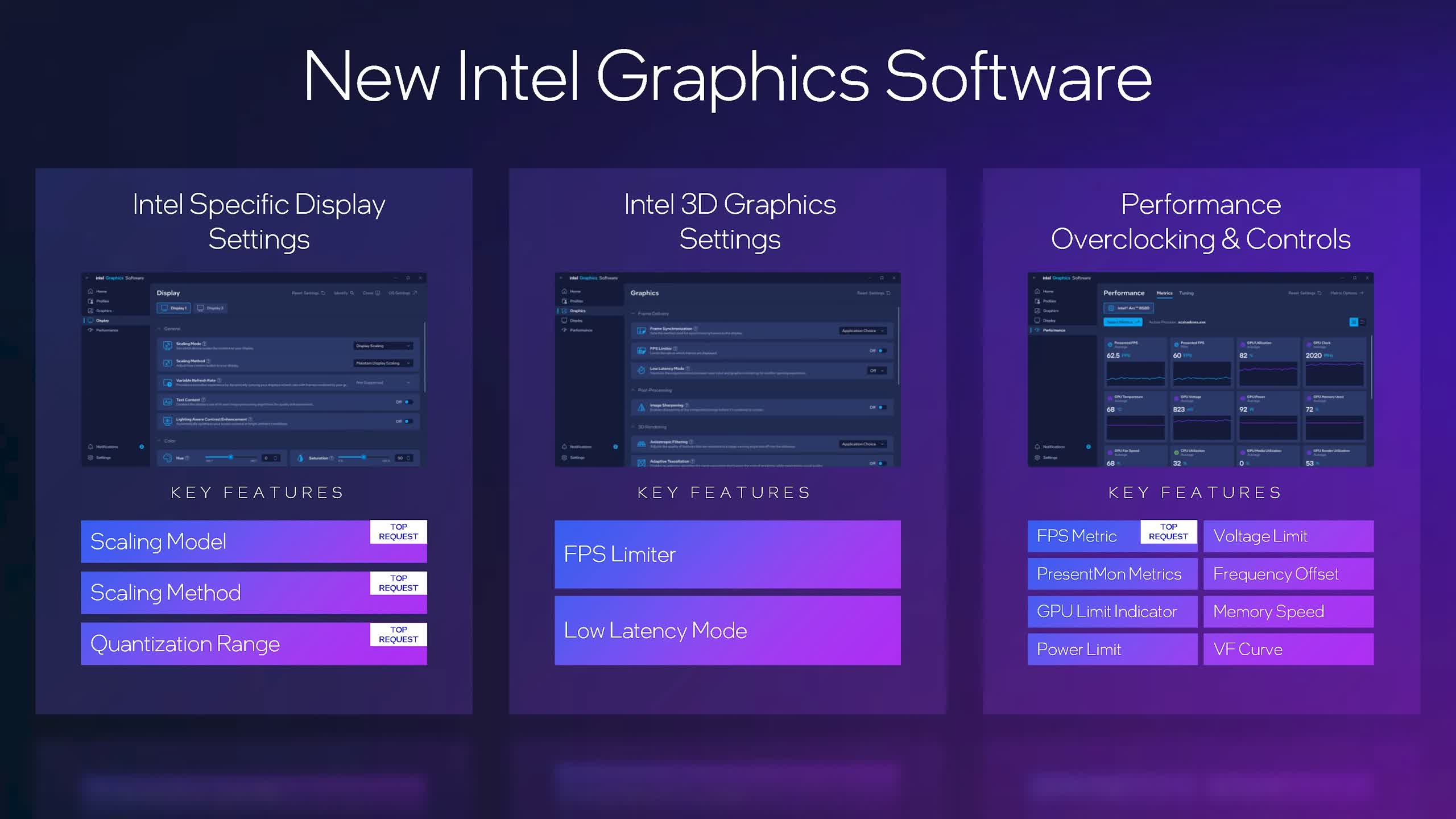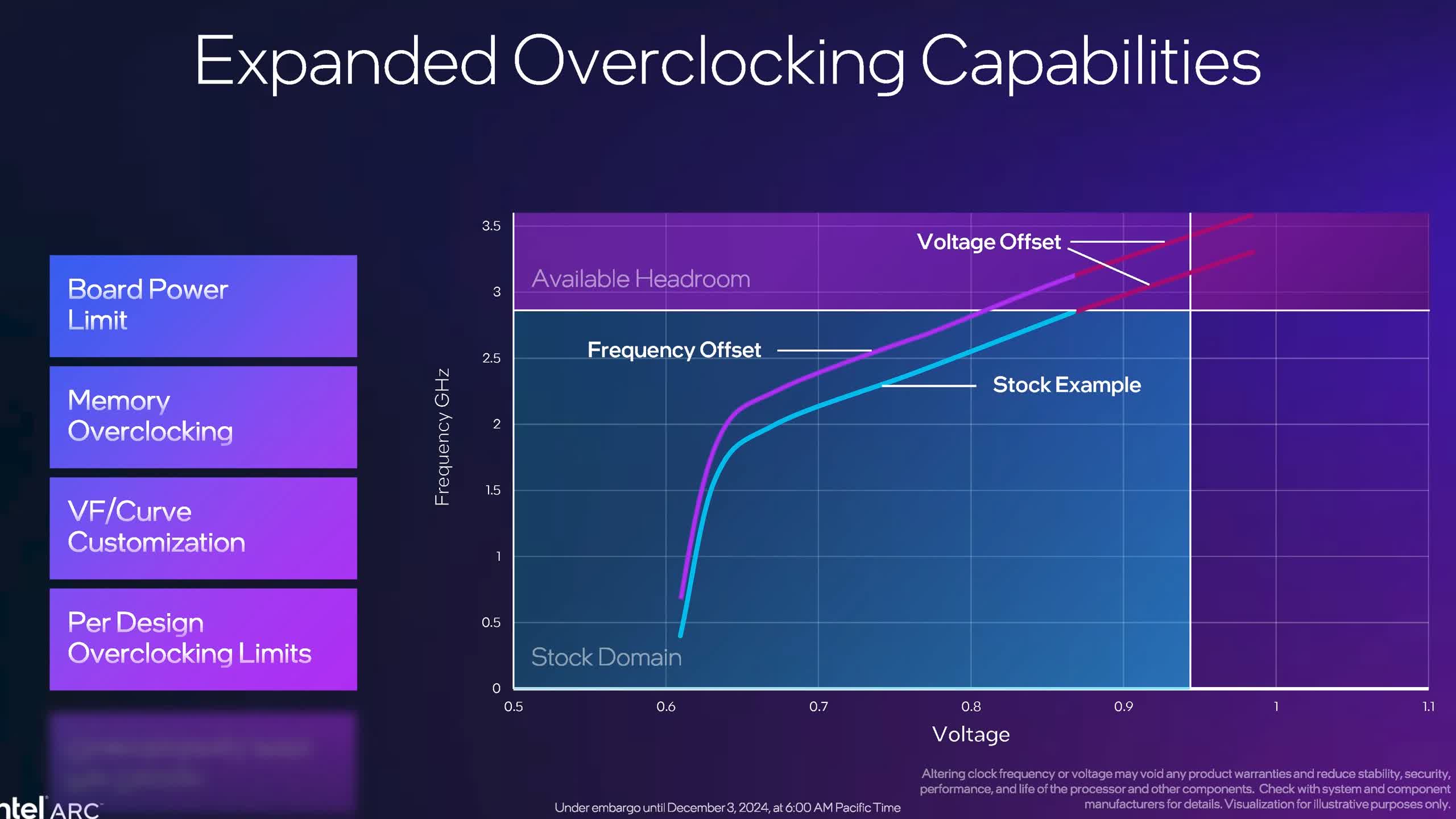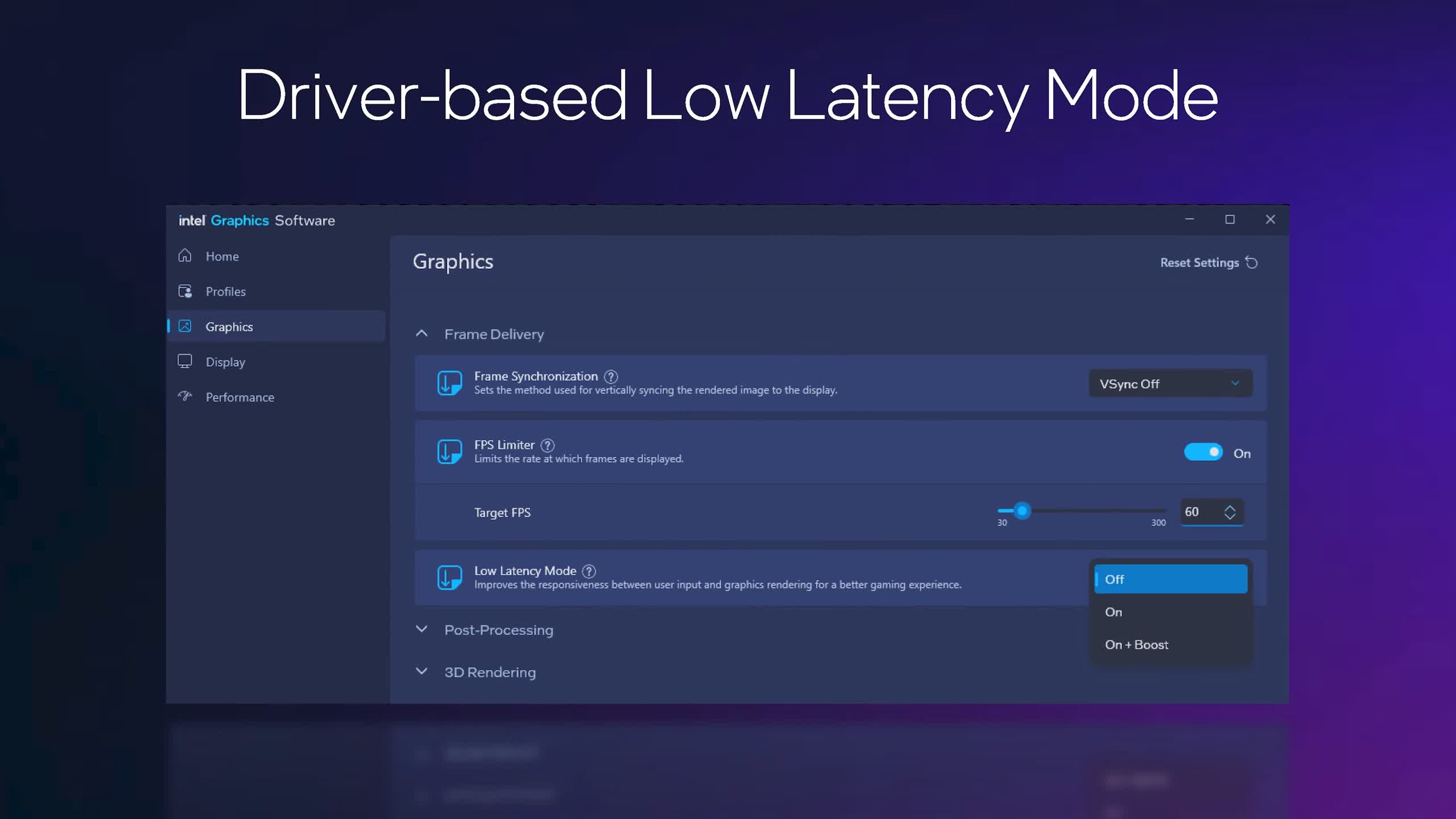Launching alongside new Intel Battlemage GPUs today is XeSS 2, the next version of XeSS that adds frame generation and a low-latency mode, very similar to what we've seen from Nvidia with DLSS 3 frame generation and Reflex, as well as AMD with FSR 3 frame generation and Anti-Lag 2.
The way Intel has described the operation of these new XeSS 2 features is very similar to DLSS 3. Frame generation interpolates between two rendered frames to create an additional frame to increase smoothness.
This is done through optical flow reprojection, along with motion vector reprojection and other inputs. Intel says XeSS 2 has two AI models: the optical flow model and a blend model that combines the outputs generated through optical flow and motion vector reprojection. The UI is composited onto each frame at the end.
Complementing this is Xe Low Latency, an equivalent to Nvidia Reflex that aims to lower game render latency to help mitigate the lack of latency improvement from enabling frame generation. Like XeSS 2 frame generation, XeLL needs to be integrated into games.
The FPS increase seen from XeSS frame generation is similar to what we've seen previously from Nvidia and AMD's frame generation tech.
Enabling XeSS 2 slightly lowers the native render rate of the GPU, but the output frame rate is higher and smoother. For example, in F1 24, Intel quotes an increase from 82 to 136 FPS when using XeSS Quality upscaling. That 136 FPS after frame generation implies a native render rate of 68 FPS – slightly slower than native but doubled for smoother output.
Where Xe LL comes in is to try and provide latency similar to running without XeSS FG or LL. Of course, if you enable Xe LL and compare frame generation enabled to disabled, frame generation will always lead to higher latency, as seen in this chart.
This is because the native render rate is lowered to run the frame generation algorithms. So, like with other FG technologies, Intel's frame generation doesn't improve latency directly. Instead, Xe LL works alongside frame generation to provide the best possible latency experience.
Crucially, XeSS 2 frame generation requires Intel hardware, specifically their XMX AI engines featured in Alchemist and Battlemage. This means XeSS 2 will run on older Arc GPUs like the A770 in addition to the new B580 and B570, but it won't work on AMD or Nvidia graphics cards.
Intel says they have received requests to create some form of XeSS 2 frame generation that works on other GPUs, but for now, it's Intel-only. This includes Xe-based integrated graphics like Lunar Lake.
XeSS 2 will be coming to a range of titles, including Dying Light 2, F1 24, Marvel Rivals, and Assassin's Creed Shadows. XeSS adoption has been solid considering the relatively small market share of Arc GPUs, so we're keen to see how that goes for XeSS 2.
The SDK for this technology also includes updates enabling support for DX11 and Vulkan titles, though XeSS 2 does not include an updated super resolution model for increased quality.
New Intel GPU drivers
Other software features Intel is launching alongside Battlemage include an overhauled Intel Graphics Software utility. This updated utility includes frequently requested features like an FPS metric in the overlay and display scaling settings.
There are also expanded overclocking tools, including the ability to adjust board power limits, voltage-frequency curves, and memory from within the app.
The utility will also include a driver-based Low Latency Mode, again very similar to what Nvidia and AMD offer in their drivers. Along with the launch of XeSS 2, this shows Intel is bringing its software up to the level offered by its competitors.
For a full rundown of Intel's new Battlemage GPUs announced today, the Arc B580 and B570, check out our story where we detail specs, Intel's performance claims and a perspective of where the GPUs will stand in face of upcoming launches from AMD and Nvidia.
Intel XeSS 2 arrives alongside new Battlemage GPUs with frame generation and low-latency mode
